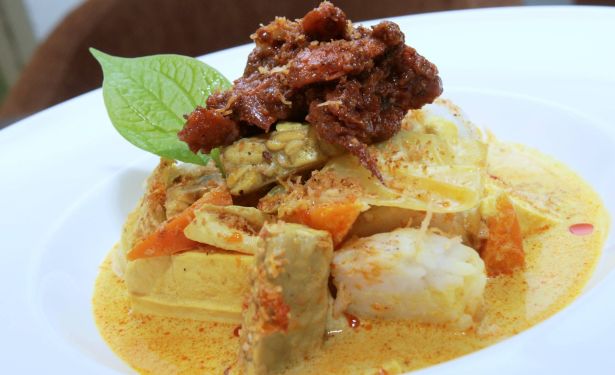What does ‘casual restaurant’ make you think of? If the term sounds too random for your taste buds, then you’re in for a real surprise.
AT the Watami Japanese Casual Restaurant, nothing is quite as casual as it seems. In fact, the restaurant takes itself extremely seriously. So why associate itself with such a laid-back term, you may ask?
Well, all this dates back to 1984, a time when Japanese men found solace in drowning their sorrows with alcohol, spending the after-hours at taverns rather than restaurants. It was then that Miki Watanabe, the founder of the Watami Group in Japan, sparked off the “casual restaurant” concept, where guests could wine and dine in comfort, all under one roof.
A decade later, the ishokuya concept of a dining-oriented bar came to life. Ishokuya springs from a medley of words: scene, meal, and restaurant. Watami, initially derived from Watanabe’s name, also unveils the phrase: “gather people to dine in harmony”.
“Casual restaurant”, or kajuaru resutoran, is currently registered as a trademark of the Watami Corporation.
Today, Watami has over 600 outlets in Japan and 50 across Asia Pacific – in Hong Kong, Taiwan, Shenzhen, Guangzhou and Shanghai in China, as well as in Singapore.
The restaurant arrived on the shores of Malaysia late last year, but only after much cajoling, done in part by Andrew Reddy, the managing director of ChasWood Resources, one of Malaysia’s largest multi-concept restaurant operators.
ChasWood, being the franchise holder of TGI Friday’s in Malaysia and Singapore, also owns and operates Italiannies, The Apartment Restaurant & Bar, Teh Tarik Place, Laundry, Republic, Malones Irish Bar & Restaurant, and kicked off Bulgogi Brothers Korean BBQ Restaurant recently.
“As a restaurateur, I saw that Japanese brands were having a growing influence on the country. And under ChasWood, we had this vacuum that we needed to fill with an Asian brand. I approached Watami in late 2009 but at that juncture, they were more interested in running their own outlets in the region – that’s when they tested the waters in Singapore and expanded quite rapidly. I continued pursuing the team, ‘hounding’ them even, and eventually they realised how serious I was with the whole business,” says Reddy, 55.
Watami had then tasked a group of representatives on a three-month investigation of ChasWood. “They came and they ate in all our restaurants and watched how we worked – the Japanese have a very structured system that helps them decide whether or not to entrust you with something. Passing the test was a personal breakthrough, because it meant that they really trusted me and ChasWood with their brand.”
Authenticity check
In August last year, Malaysia’s first Watami outlet opened in Pavilion KL, Kuala Lumpur. By November, a second one had found its way into 1 Utama Shopping Centre in Bandar Utama, Selangor.
The third outlet, located in the newly launched Paradigm Mall in Kelana Jaya, Selangor, opened in May this year. All three restaurants are pork-free and serve a selection of cocktails, beer and liquor.
Having garnered mostly positive online reviews for its food quality and standards of service, one would be inclined to think that all could only be smooth sailing for the restaurant.
Reddy, however, feels that the local market has yet to fully grasp the Watami concept, or rather, to develop a taste for authentic Japanese cuisine.
“When the Watami group came, they gave us a three-hour presentation of the current dining situation in our country. They told us about copycat brands, and restaurants that were Watami-inspired. They warned us of the challenge that because other brands were here before us, people would naturally regard those as ‘the original’ instead of the other way around.”
Most Japanese eateries in the country, Reddy claims, are home-grown brands.
“What we know is what we eat from the homegrown brands that have been serving us in the past. But what exactly constitutes ‘authentic’ Japanese food?
“When I first dined at Watami in Tokyo, Japan, I was bowled over by the difference in flavours and even service. I knew instantly that Malaysians needed to have that experience too.”
Indeed, Watami is not exactly a sushi-on-a-conveyor-belt restaurant. Its woodsy furniture, high ceilings and comfortable spaces between tables create a posh oriental ambience.
Yet the prices on the menu are anything but over-the-top. A serving of freshly sliced sashimi, for instance, starts at RM17.90.
The food selection in itself boasts a distinction beyond what one would normally find in a local Japanese diner. There’s the Tompeiyaki, drizzling with layers of beef, cheese, cabbage and egg, and appetisers like Fried Camembert Cheese and Kani Hotate Cream Croquette.
“I used to think that Japanese food was all about sushi and sashimi. Watami’s menu selection really opened up my eyes. I mean, I got so excited when I discovered that one of its specialties is deep-fried gristles (or cartilage; Nankotsu Karaage) – soft bones that we Malaysians throw away all the time!” Reddy enthuses.
Quality counts
Not surpisingly, Watami exercises stringent control over its food quality – 85% of the ingredients used locally are fully-imported from the Japanese corporation’s sources.
“Even for something as simple as a passion fruit tea drink, we’re not allowed to use ingredients from our own sources. It doesn’t matter that passion fruit grows in abundance in Malaysia. We have to be content with importing the fruit, freeze-packed, all the way from another country, because Watami has identified the ideal fruit source that produces the optimum flavour for the drink. Of course, I experienced much heartache agreeing to things like this, but I see a point in it all,” Reddy shares.
The Group was also made to invest in some kitchen equipment necessary in the delivery of the Watami experience, one of which amounted to RM80,000.
“As Malaysians, we tried to find shortcuts. But there was no budging,” Reddy quips.
Nevertheless, he is grateful that the Malaysian-Japanese partnership has proved to be a valuable learning curve for the entire ChasWood Group.
“There’s a lot of training involved, even in the tiniest of details, like where you set the products or how you layer an ingredient to get a certain colour. It’s really admirable, just seeing how they treat every element with such controlled standards.”
Incidentally, Watami’s mission is none other than to collect the most “thank yous” on the planet, which could very well explain its seriousness in offering great food coupled with impeccable service.
“When I first heard about this vision, I was amazed at how incredibly simple the concept was. A person brings in the raw materials to the restaurant; the staff receiving them says ‘thank you’. It all begins there. And then there’s the cook who will pass the food to the waitress, who will then say ‘thank you’, and the food is brought to the customers. Just having that kind of culture going around changes the whole gameplay.
“And when the customers leave and they say ‘thank you’ to us, we’ll know we’ve really done our job because those words would carry so much more weight,” Reddy opines.
The service staff is also trained to half-kneel when serving the customers – the approach being rooted in traditional Japanese culture.
“Miki Watanabe will be visiting our outlets in September. When he walks in, he’s not going to be looking at the location of the restaurant or the design. All he wants to know is: Is there Watami culture here? If there’s none, he’d take back the rights to the brand – this much he assured me,” Ready reveals.
Service with a heart
But that’s not all: the Watami Corporation places great emphasis on corporate social responsibility, requiring its global outlets to participate in some form of community engagement.
In 2004, the company entered the nursing care business and has since been running 70 fee-based nursing homes in Japan.
Support is also given to organic agricultural enterprises as well as the development and management of facilities that incorporate reduced environmental burden.
Watami also supports School Aid Japan, an organisation established in 2001, in its attempt to build free schools to assist the growth of children’s education in Cambodia. Over 125 of these schools have since been built.
“It took Watami Hong Kong almost six years to collect enough employee contributions to make a difference, but they managed, and just recently built another school for the children in Cambodia. Watami Malaysia hopes to do something similar in the future,” Reddy offers.
For now, Watami Malaysia will focus on building up the credibility of the brand in the local dining scene, which has begun to attract an influx of discerning patrons.
“I think it has to do with Generation Y. They love to go to Muji (retail store) and pay for a towel that is three times the price than it should be. It’s not that they don’t know what they’re paying for – they’re simply discerning buyers who know quality when they see it,” Reddy observes.
“We’ve always been looking to the West. But the fact is, the East has got a lot, if not more, to offer; within Japan itself, the choices are endless.
“I think the ‘Look East’ culture is flowing in to us and it’s allowing us to go back to our Asian roots to appreciate such things.” Watami outlets (pork-free) are located in Pavilion KL, as well as in 1 Utama Shopping Centre and Paradigm Mall, both in Petaling Jaya, Selangor.




